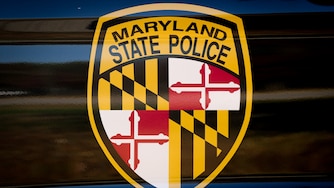For Maryland and states across the Chesapeake Bay watershed, the start of 2025 came with familiar disappointment.
Once again, the group of seven jurisdictions working to clean up the Chesapeake Bay fell short of a much-anticipated deadline to curb pollution and rebuild ecosystems in the nation’s largest estuary.
Now, watershed states and federal officials are back to soul searching.
By the end of the year, they aim to revamp goals and develop a new Chesapeake Bay cleanup plan, the fifth agreement between bay states since restoration work began in 1983.
Officials released a preliminary take earlier this month. At fewer than 20 pages, the “Beyond 2025” plan — a voluntary agreement between the six watershed states and the District of Columbia — could shape the next decade or more of bay policy.
The document sticks to a familiar scope, laying out sweeping goals and targets for everything from oyster and blue crab populations; runoff from farms and urban stormwater; rebuilding wetlands and forests; to restoring the waters to resemble the teeming ecosystem of centuries ago.
Some groups closely involved in the restoration said they were encouraged by the states’ commitment to comprehensively addressing the bay’s problems. Other observers expressed disappointment at what they saw as a plan short on urgency, concrete benchmarks and deadlines.
Keisha Sedlacek, federal director for the nonprofit Chesapeake Bay Foundation, said she was happy to see authors sticking by an ambitious vision to restore all aspects of the bay.
Still, she noted, the draft includes numerous blank spaces — like for the acreage of forest, wetlands and farmland they aim to conserve — where the authors have yet to settle on specific targets.
Also, Sedlacek noted that unlike the previous agreement’s universal 2025 deadline, the timeline in this iteration isn’t clear: Some goals have 2030 deadlines, many have 2035 deadlines, others aim for 2040 and some have no deadlines at all. In the final version, Sedlacek said she would like to see an overarching deadline: 2040, perhaps.
“It has the potential to meet the moment,” Sedlacek said of the proposed agreement, but it’s difficult to say whether the ambitions are right, she added, until these details are finalized.
Over the last four decades, work to clean up the Chesapeake Bay has consumed billions in public funding, but even its strongest proponents admit the effort hasn’t achieved hoped-for progress.
Maryland Natural Resources Secretary Josh Kurtz, who chairs the Chesapeake Bay Program committee drafting the revised agreement, said he sees the proposed plan as more realistic, specific and scientifically calibrated than the version of a decade ago.
Kurtz emphasized that the restoration effort did achieve a set of less central goals before the 2025 deadline, and argued that the restoration effort has managed to make headway despite the watershed’s ballooning population.
Some, though, weren’t impressed by the new plan.
One detractor is former Maryland Sen. Gerald Winegrad, who has often criticized state and Chesapeake Bay leaders for “greenwashing” restoration shortcomings.
Winegrad argued the plan is especially short on accountability for agriculture, the main driver of nitrogen and phosphorous pollution, nutrients that spur the bay’s “dead zones” where underwater life is oxygen-starved. Under the draft agreement, states would wait on the release of new modeling in 2030 to set specific goals for reducing nutrient pollution.
The 2025 goal of expanding underwater grasses — crucial habitat for fish and crabs — to 130,000 acres is scaled back in the draft to 95,000 acres by 2035.
Winegrad called vague, diminished ambitions like these “tragic.”
“It signifies a collapse of formal bay restoration,” he said. “The bay, in my opinion, will never be better than it is now because of this collapse in the efforts.”
Leila Duman, Chesapeake and coastal bays restoration officer for the Maryland Department of Natural Resources, said members looked to areas where states came up short in 2025 and broke goals down into targeted and more realistic aims.
Duman also pointed to areas where the revised plan builds on restoration successes, like clearing waterways for fish.

Kurtz, meanwhile, said observers can’t judge the restoration effort’s success based on benchmarks from the 2014 agreement, since the bay constantly changes and scientific models evolve.
“I can appreciate the fact that there’s frustration that we have not achieved as much as everyone would like to see, but I think the science bears out that we have been successful,” the natural resources secretary said.
Other observers directed criticism toward President Donald Trump’s administration, which oversees the Bay Program, the U.S. Environmental Protection Agency office coordinating the multistate clean-up.
Trump didn’t recommend slashing funding for the Bay Program this year, as he did in all four years of his previous administration, but his proposed budget would strip much of the agency scaffolding that environmentalists say is critical to implementing the clean-up plan.
“As long as we have a climate denier in the White House, these words are irrelevant,” said Will Baker, the Chesapeake Bay Foundation’s former longtime head.
To Baker’s point, direct references to “climate change,” as well as diversity and equity-focused initiatives, were scrubbed from the draft agreement — a response to presidential attacks against both.
In a statement, interim Mid-Atlantic EPA Administrator Amy Van Blarcom-Lackey said the agency stands by work to restore the bay, calling it an “amazing initiative filled with success stories across multiple states.”
“EPA stands unwavering in its commitment to restore the Bay and its watershed,” she said.
Others like Kristin Reilly, director of the Choose Clean Water Coalition, were impressed by what members were able to produce on a tight six-month timeline, despite the pressures federal workers and environmental agencies have faced since January.
Still, Reilly also worries about the Trump effect.
The draft doesn’t account for the “doomsday” scenario, as Reilly put it, in which Trump and Congress slash funding for environmental programs key to the restoration effort.
“We’re setting these goals and setting these dates” without factoring the prospect of massive funding cuts, she said. Among them: Trump’s proposed budget would close the National Oceanic and Atmospheric Administration’s Chesapeake Bay office and threatens to curtail the U.S. Geological Survey’s water monitoring in the region.
Federal support is critical, Reilly said: “The states cannot do it by themselves.”




Comments
Welcome to The Banner's subscriber-only commenting community. Please review our community guidelines.